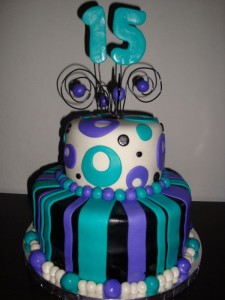Tag: historical fiction
Interview with Susan Spann, Author of “Claws of the Cat”
It is my very great pleasure today to welcome friend and fellow historical fiction writer Susan Spann to the blog. Susan’s debut historical mystery Claws of the Cat released in in July.
First a blurb to tantalize you:
May 1564: When a samurai is brutally murdered in a Kyoto teahouse, master ninja Hiro has no desire to get involved. But the beautiful entertainer accused of the crime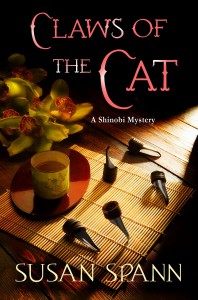 enlists the help of Father Mateo, the Portuguese Jesuit Hiro is sworn to protect, leaving the master shinobi with just three days to find the killer in order to save the girl and the priest from execution.
enlists the help of Father Mateo, the Portuguese Jesuit Hiro is sworn to protect, leaving the master shinobi with just three days to find the killer in order to save the girl and the priest from execution.
The investigation plunges Hiro and Father Mateo into the dangerous waters of Kyoto’s floating world, where they learn that everyone from the elusive teahouse owner to the dead man’s dishonored brother has a motive to keep the samurai’s death a mystery. A rare murder weapon favored by ninja assassins, a female samurai warrior, and a hidden affair leave Hiro with too many suspects and far too little time. Worse, the ninja’s investigation uncovers a host of secrets that threaten not only Father Mateo and the teahouse, but the very future of Japan.
And now some questions to take you behind cover-copy (and it’s no exaggeration to say Susan reveals some thing here she has never told readers before):
1. What inspired you to choose a 16th century ninja master as your main character and detective?
In spring, 2011, while getting ready for work one morning, I actually heard a voice in my head say “Most ninjas commit murders, but Hiro Hattori solves them.” I knew immediately that this was a character—and a story—I had to write. I’ve loved Japanese culture since my college days, and loved the idea of writing a ninja detective.
2. Do you speak Japanese or have any personal connection to the country, its history and/or culture?
I speak a little Japanese (my Chinese is better) and I studied Japanese language, history, and culture for my undergraduate degree in Asian Studies from Tufts University. I’m also a fan, and lifelong student, of Japanese art and architecture.
3. I am always impressed by authors who can manage to plot out historical mysteries—it seems like laying an extra level of complexity on an already complex genre. Why a mystery as opposed to a straight historical?
Because I love to murder my imaginary friends.
Also, I find the complexities of a mystery allow me to use the history in unusual and interesting ways. For example, I get to translate modern forensics as seen through the eyes of a 16th century ninja assassin. I need to know what killed the victim, and how, but I also need to see the crime as Hiro would have seen it. The historian in me loves the opportunity to see the world through medieval eyes. The mystery lover in me … well, that gets us back to murdering imaginary friends.
4. Besides Hiro Hattori, who is your favorite character in Claws of the Cat? Who is your least favorite? Why?
This is one of the hardest questions I’ve been asked. I love all of my characters, for different reasons. I think my favorite, other than Hiro, would have to be Father Mateo—though he wasn’t my second-favorite from the start. He earned a place in my heart as I wrote the initial draft, in much the same way he earns a place in Hiro’s.
My least favorite is Mayuri, the teahouse owner. Not because I don’t like her—I do. I call her my least favorite because I found her elusive and difficult to write. Most of my other characters revealed their “inner selves” and motivations to me early on. It took me the entire first draft to figure Mayuri out.
5. Were you able to travel for inspiration and research? If not, what technics did you use to put yourself “virtually” into the world you would depict in Claws of the Cat?
Unfortunately, family circumstances kept me from taking the intended research trip to Japan while writing this installment of the series. (I have one planned, tentatively, for next summer.) However, during my online research I met a tour guide in Kyoto who helped me with maps and translations for certain details in Claws of the Cat, and also the sequel, Blade of the Samurai.
In addition to online research (Google Earth is great, and so are online document resources) I read and re-read many books from my library on Japanese art, architecture, history and culture.
6. Historical truth is often stranger than fiction. During your research for Claws of the Cat what was the most unusual or unexpected thing you discovered?
That Father Mateo may have really existed.
While writing the first draft of Claws, I intentionally eschewed known Jesuit missionaries working in Kyoto in 1565 and created an entirely fictitious Jesuit sidekick for Hiro. I did so because I wanted to respect the Jesuits’ work in Japan, and didn’t want to make errors or divergences in the activities of a “real” priest for the sake of plotting novels. The easy solution was just to make one up. I also gave Father Mateo a fictitious “mission” separate from the primary Jesuit mission in Kyoto, allegedly because he works with commoners and doesn’t want to offend the samurai elite who frequent the actual Jesuit mission. That’s historically reasonable, because at the time the primary Jesuit work in Kyoto was done among the samurai and a priest who worked with commoners would have needed a separate space.
After finishing the draft, I discovered a line in one of the Jesuit histories which mentions an unnamed Jesuit priest who arrived in Kyoto in 1563 (the same year my fictitious Father Mateo arrived) and “disappeared” to work on his own in Japan. This is exactly the way the Jesuits would have mentioned a priest who went to work among the common people if they wanted to keep the samurai from noticing.
It was very weird, indeed, to think that my fictitious Jesuit might have a historical analogue after all.
7. Authors of historical novels walk a line between known historical facts and fiction. Where do you draw the line on your personal map between accuracy and imagination?
The lovely thing about using fictitious protagonists in a factual setting is that the line stays relatively clear. All of the plot is mine. All of the history really happened, though where the history intersects with the plot, I try to stick with historically reasonable plotlines. I include some real historical figures, but also to ensure that their involvement doesn’t contradict with any of the known historical facts about their lives.
For example, Claws of the Cat centers on the murder of retired general Akechi Hideyoshi. The Akechi were a real samurai clan who lived and served the shogun during the time the book takes place. Akechi Hideyoshi is fictitious, but his cousin, Akechi Mitsuhide (whose name appears in the book) is a real person. The parts of the book that deal with Mitsuhide are historically accurate (or at least historically reasonable). Those which deal with Hideyoshi and his murder come from my imagination.
8. Can you share a secret about your book (or the writing of it)–something that readers can’t discover from the text itself?
Yep. I’ll share two.
First: Readers won’t learn the name of Hiro’s kitten until the final page of the book. I didn’t learn it myself until I wrote that final page. Everything else, I knew, but that name eluded me until the very end of the draft. Ironically, the moment I wrote it, I knew I’d found the right one.
Second: I knew the kitten’s name was “correct” because it has relevance to another book (and a major plot point) later in the series. For the rest of that secret, however, you have to wait until Book 5.
And, as promised, that’s something I’ve never told anyone before.
9. As someone who came to writing as a second career herself I am always interested in how people become writers. How did it come about for you?
In one sense, I’ve always self-identified as a writer. I remember being six years old and making up stories to entertain myself while I weeded the roses outside my parents’ house (that was one of my chores).
I didn’t really get serious about writing for publication until I attended the Maui Writers’ Conference in 2004. That was when I committed to writing every day, and to writing as many manuscripts as it took to get published.
It took five. The first four were pure historical fiction, told from a female POV. My skills were improving, but something wasn’t right. After the “ninja attack” in 2011, however, I realized that the problem wasn’t me, it was the genre: I shifted to historical mystery, and my first mystery novel landed a three-book deal.
That’s why I encourage other authors to write whatever book comes into their hearts—no matter how bizarre it seems at the time. You never know when a novel will teach you what kind of writer you really are.
10. Which is most likely to spark the idea for a Susan Spann mystery—a time period, a specific event or a character?
Initially, it was the character, Hiro, but now that I’m working with Hiro and Father Mateo in a series format it’s the setting that sparks the plot. Each Shinobi Mystery novel is set in a different part of the medieval Japanese world. Claws of the Cat was set in the “floating world” of geishas and the entertainment culture. Blade of the Samurai moves the action to the shogun’s palace, and Book 3, currently titled Flask of the Drunken Master, will take the reader into the world of brewers and moneylenders. I’m working on additional plots that involve the world of the outcastes, the roadside inns, and even the lair and training grounds of Hiro’s ninja clan.

11. Do you have a special writing spot—a lair perhaps where you like to do your work? Is there a picture you could share?
I do! I have a home office with floor-to-ceiling bookshelves, a nice big desk (with a window) and a 60-gallon marine aquarium—my seahorse

reef. I write to the burble of filters and the glow of aquarium lighting. I’ve included a couple of photos: one of my desk (with my “amanuensis” Oobie, who was the inspiration for Hiro’s cat), one of the reef, and one of the office as seen from the doorway. It’s messy, but it’s home!
12. If you could read any book again for the first time, what would it be and why?
Jurassic Park. Michael Crichton’s vision of the dinosaur amusement park-gone-wrong kept me up all night. I couldn’t stop turning pages. The novel captured my imagination in a way few stories can. His settings were vivid, his characters entertaining, and the action never stopped. Plus … there’s a T-Rex.
13. Will you be staying in Japan for your next book? If not where are you headed?
I’m back in Japan for books 2 and 3 of the Shinobi Mystery series. In fact, each of those books also brings back some of my favorite characters from Book 1. Based on the reader responses, they’re some of the readers’ favorites too. After that, we’ll see. I’d love to write even more Shinobi novels, but I’ve got some other ideas too.
Thank you, Sophie, for the interview – this has been great fun! I love reading about what goes on “behind the scenes” with other authors, and it’s fun to have the chance to take other people behind the scenes of my books too!
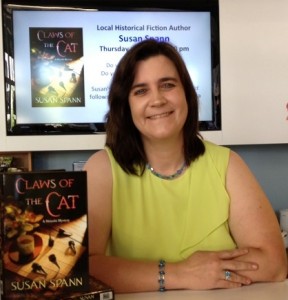 About Susan: Susan Spann is a transactional attorney and author of the Shinobi Mystery series featuring ninja detective Hiro Hattori. The first book, Claws of the Cat, released in July 2013 from Minotaur Books. Susan has a deep interest in Asian culture and has studied Mandarin and Japanese. Her hobbies include traditional archery, martial arts, rock climbing, horseback riding, and raising seahorses and rare corals in her marine aquarium. You can find Susan online at www.susanspann.com, or on Twitter @SusanSpann.
About Susan: Susan Spann is a transactional attorney and author of the Shinobi Mystery series featuring ninja detective Hiro Hattori. The first book, Claws of the Cat, released in July 2013 from Minotaur Books. Susan has a deep interest in Asian culture and has studied Mandarin and Japanese. Her hobbies include traditional archery, martial arts, rock climbing, horseback riding, and raising seahorses and rare corals in her marine aquarium. You can find Susan online at www.susanspann.com, or on Twitter @SusanSpann.
Historical Novel Society Conference Teaser—Meet HNS Panelist Nancy Bilyeau
In less than a month I will be off to the 5th North American Historical Novel Society Conference in St. Petersburg Florida, where I will be sitting on two panels—“Location, Location, Location” (discussing how setting is the mortar board upon which historical novels are built and tackling topics related to recreating period locations); and “The Feisty Heroine Sold into Marriage Who Hates Bear Baiting: Clichés in HF and How to Avoid Them” (title of this one says it all). 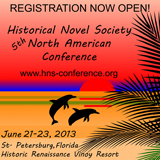
Those of you who were kicking around this then-new blog 2 years ago know what my conference attendance means. . .lots of juicy post-event blogging on trends in the genre and topics of historical fiction interest. But why should you wait until after? How about a conference teaser—an interview reunion with HNS panelist, Nancy Bilyeau.
Nancy is the author of a pair of marvelous historical thrillers following the adventures of novice nun, Joanna Stafford, as she seeks to survive and thrive in Henry VIII’s England while the monasteries are dissolved around her. Nancy’s first book, The Crown, released in 2012 to immediate critical acclaim. “O” (The Oprah Magazine) called it, “A juicy blend of lust, murder, conspiracy, and betrayal.” Nancy’s second book, The Chalice, released this past spring to the eager embrace of existing fans and new ones alike.
Nancy last visited me immediately after the release of her debut novel. I present for your pleasure an update to that interview.
1) Since we last sat down together in our virtual chairs your second novel, The Chalice, came out. Can you tell us a little bit about the new book?
In the second book, it’s 1538, and my main character, Joanna Stafford, is caught in the crosswinds of time. She is a Dominican novice without a nunnery—Henry VIII has broken with Rome, and all the monasteries have been seized. Joanna must decide what path to follow now, and while she seeks a quiet life of tapestry weaving and raising her orphaned relative, Arthur, the kingdom is far from stable. There is a conspiracy against the king, one revolving around prophecy, and Joanna is targeted by those who want Henry VIII off the throne. She learns that the prophecy is about her – and an act she must take in the future, one that could be very dark and dangerous. So the conflict of the book is: If you loved something very much and you had a chance to save it but to do so you must commit an act that is perhaps unforgivable, would you do it? 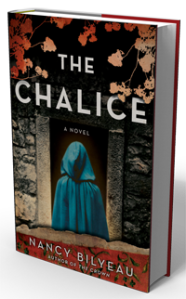
2) inspired you to choose a fictional Dominican nun as the heroine of your series?
I first chose to set a book in the 16th century—simply because it is my favorite century from history. I love mysteries and thrillers, and wanted to attempt to write one with a female protagonist. It took me a long time to figure out who would be the person. I didn’t want a royal or lady in waiting, yet someone living in a Tudor village, I feared it would be too hard to inject that woman into conflict that rises to the level of a thriller. A nun struggling for her future in the middle of the Dissolution of the Monasteries—when the Catholic Church was being violently dismantled—could be quite compelling. Finally, I picked a Dominican because there was only one such order in England, and that made it special.
3) I found it refreshing that Joanna stayed “in character”—true to the religious sentiments one would expect a 16th century nun to have. How difficult was it for you to achieve that? Do you think it was a risky choice given you are writing for a modern—and generally rather skeptical—audience?
One of my pet peeves is characters in historical novels who have modern sensibilities. It’s the easy way out. There is some strange part of my personality that compels me toward the most difficult choices. Sometimes I wish it were otherwise! But as soon as I decided on a nun, I was determined to make her authentic to the spiritual values of the period. I didn’t want to write a book with a reluctant nun who is forced into it by her father or retreats to a priory after rejection by a man. Again, that’s the easy way out. I did worry that readers would be turned off by a spiritual woman but I’ve not seen that reaction. Readers of historical fiction are eager for authentic behavior, I’m more convinced of that than ever. Commit anachronisms at your peril!
The way I tried to achieve it was reading what women in religious orders actually wrote: Catherine of Siena, Hildegarde of Bingen, Teresa of Avila. That helped get me in the proper mood. Also a writing teacher recommended I research the lives of the early female Catholic saints, the ones who were torn to pieces in the Roman Coliseum or who became martyrs in the Dark Ages and medieval period. The thinking of these women is about as far from a 21st century mindset as you can get. Just fascinating. 
4) Besides Joanna, who is your favorite character in the series? Who is your least favorite? Why?
Brother Edmund is my second favorite—I like to think that he is a pretty original character and for some reason I have tremendous sympathy for him. He’s a mix of strengths and weaknesses. I tried my best to make all the characters nuanced. I don’t like two-dimensional people hurtling through thrillers. Or characters with worn-out identifying descriptions: a natural beauty, a strong-jawed man. Ugh.
My least favorite character? Hmmmm. That’s an interesting question. Did I create a character I personally would dislike? Apart from George Boleyn—and I can’t give away why I wouldn’t want to have encountered him at a tender age, or else that would be a spoiler—it would have to be the young prioress in The Crown. She was inspired by a boss I once had—a very difficult one. In fact, I drew on my personal work history, my years in the magazine business, when depicting life in the priory. I thought about it a lot, and decided that though the stereotype of a nunnery was of graceful, serene ladies floating down the halls in harmony, I imagined that there would be the rivalries and tensions found in any group of people essentially working together, and in this case living together too. I was very happy to receive an email from a Dominican nun and two emails from friars that said I captured correctly the essential feeling of life in an enclosed religious community.
5) Truth is often stranger than fiction. In our last talk I asked you about interesting discoveries made while researching The Crown. When you set out to write its sequel, The Chalice, what was the most unusual or unexpected thing you discovered in that process?
I was stunned by how much belief there was in astrology, alchemy and prophecy, from the highest levels of society to the lowest. The mid-16th century was a very mystical time.
6) Writing a series presents special challenges to an author. What, in your opinion, is the most difficult aspect of writing sequential novels? The most rewarding?
The most rewarding aspect is that I love my characters and I want to write them in new situations, whether it’s political crisis or romantic entanglement. I just enjoy spending my time with these people! As for the hardest, well, I am trying to write these books for someone who has never read the ones that come before and also for the fans of the series. It’s hard to serve both kinds of readers.
7) I know you are hard at work on the final book in this series. What will it be called and can you share a bit about it?
I’m excited to share with you that Simon & Schuster has bought the third book. It is called The Covenant. Joanna Stafford finally returns to the court of Henry VIII—and nearly pays for that decision with her life. Someone is trying to kill her and she doesn’t know who. If you’ve read the first two books, you know that there are enough people to form a line. LOL. Also, Joanna will travel outside of England, as she did in The Chalice, but farther this time. And she will make a definitive decision on how she plans to spend the rest of her life, and with whom.
8) In The Crown Joanna brushes elbows with a number of famous historical characters like Catherine Howard and Stephen Gardiner, Bishop of Winchester. In The Chalice you treated us to a face-to-face encounter between Joanna and Thomas Cromwell. Who might we meet in book three?
In The Covenant, many things are going to come to a head that I have been writing about in The Crown and The Chalice. Joanna is a weaver of tapestries and Henry VIII is the most avid collector of tapestries in Europe (that’s true!), and so she will be pulled into the court and the inner circle of the king. Catherine Howard will play a larger role in the third book, which shouldn’t surprise those knowledgeable of history, but readers will see a new side to her and also get to know a much different Thomas Culpepper than has been depicted before. Joanna will stand up to Bishop Gardiner and the duke of Norfolk in this book! And there will be some surprises too. Just as in The Chalice I brought in a character contemporary to this time not usually associated with the Tudors, I have a plan for two other fascinating folks.
9) Like myself, you will be a panelist at the upcoming Historical Novel Society Conference, what is the topic of your panel and what can attendees look forward to learning if they attend?
The name of the panel is “Making It in the Mainstream and What Comes After.” I am honored to be on the same panel as Patricia Bracewell, Deborah Swift, Jenny Barden and Gillian Bagwell. We’re going to talk about what brought us this far and how we plan to keep going.
 About Nancy: Nancy Bilyeau is a writer and magazine editor who has worked on the staffs of InStyle, Rolling Stone, and Ladies’ Home Journal. She is currently the executive editor of DuJour magazine. She was born in Chicago and grew up in Michigan, earning a bachelor’s degree from the University of Michigan. Now she lives in New York City with her husband and two children. Her first novel, The Crown, was nominated for an Ellis Peters Historical Dagger Award 2012 by the Crime Writers’ Association, given to Best Historical Crime Novel.
About Nancy: Nancy Bilyeau is a writer and magazine editor who has worked on the staffs of InStyle, Rolling Stone, and Ladies’ Home Journal. She is currently the executive editor of DuJour magazine. She was born in Chicago and grew up in Michigan, earning a bachelor’s degree from the University of Michigan. Now she lives in New York City with her husband and two children. Her first novel, The Crown, was nominated for an Ellis Peters Historical Dagger Award 2012 by the Crime Writers’ Association, given to Best Historical Crime Novel.
Couldn’t Make It to the Baltimore Book Festival—Never Fear, Post Festival Blogging Is Here
As many of you know I was a presenting author at the recent Baltimore Book Festival. This gave me a chance to participate in a number of compelling author panels, two of which have now led to blog posts. So if you weren’t able to make it to Charm City, here’s your chance to read about the discussions you missed.
Reinventing yourself as an author? You can read my thoughts on why it is vital to find the guts to admit you want your writing to be more than a hobby at Book Pregnant where I’ve posted a discussion of “Finding the Courage to Write” based on my panel of the same name.
Fan of historical fiction? If you are a reader or writer of historical novels you may be interested in my guest post today at In the Hammock, where I consider whether Historical Fiction is Women’s Fiction—or more precisely where and why I believe the two genres intersect. This is an issue I’d never given serious thought before being assigned to the “What is Women’s Fiction” panel in Baltimore.
Please stop by either or both blogs and join the discussion!
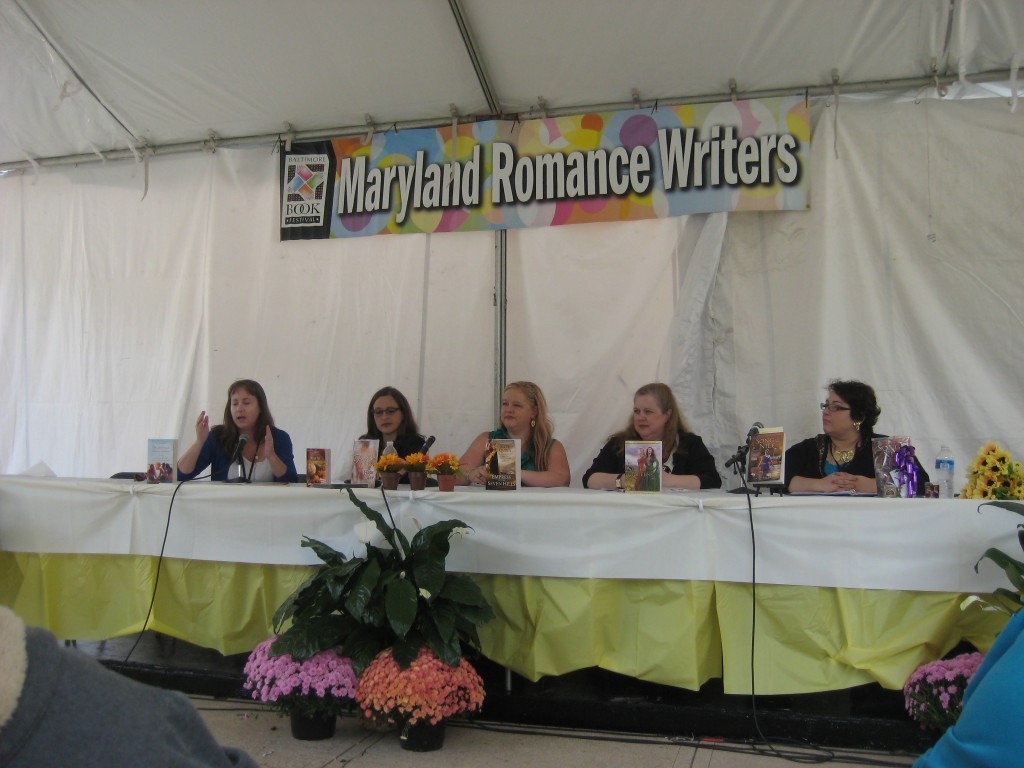
Interview with Erika Robuck Author of “Hemmingway’s Girl”
It is my very great pleasure to welcome fellow NAL author Erika Robuck to the blog today for the second in my “Get to Know the Authors I Know” series. Erika’s debut, Hemingway’s Girl released earlier this month.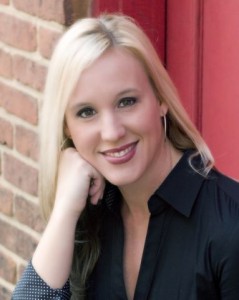
Set in Key West in 1935, Hemingway’s Girl centers on a young woman named Mariella Bennet who takes a job as a housekeeper for Ernest Hemingway and his second wife, Pauline, in order to support her widowed mother and to realize her own dream of starting a charter fishing boat business. Mariella quickly becomes entangled in the tumultuous world of the rich, their friends, and a marriage doomed for failure. Torn between her infatuation with the writer and relationships with a WW1 vet and a boxer, Mariella soon learns that she may be in over her head on all fronts.
1) Erika, Your book tells the story of Mariella Bennet, a fictional maid hired by Ernest Hemingway’s second wife. Is this book really her story or Papa’s?
Mariella is such a feisty, colorful character, that she stole the show about halfway through my first draft. She has a formidable opponent in Ernest Hemingway, but he never overshadows her.
2) Are you a big Hemingway fan yourself?
I am obsessed with Hemingway, and have been since I was nineteen years old and first read his work, just like my protagonist.
3) Where have you traveled for inspiration and research for Hemingway’s Girl?
My travels began in Key West at his house. I later flew up to Boston to the JFK Museum where 90% of the Hemingway archive is kept. I’m hoping my journey eventually takes me to his grave in Ketchum,Idaho.
4) Truth is often stranger than fiction. During your research for Hemingway’s Girl what was the most unusual or unexpected thing you discovered?
By far, the most unusual and disturbing story I found was of a Key West resident named Count Von Cosel, who faked being a doctor, fell in love with a tuberculosis patient decades his junior, and mourned her death so terribly that he exhumed her body and kept it in his house for years by rebuilding it with wax and preservatives. When the body was discovered, it was put on display for
several days so the residents of Key West could see it, before being returned to a secret grave in the cemetery where she was originally buried. The most bazaar detail about the story is that the residents of Key West thought that what he did was tragically romantic. The Count makes an appearance in Hemingway’s Girl.
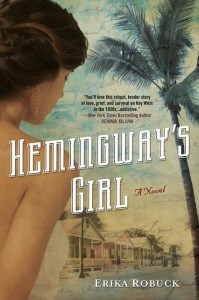 5) Who is your favorite character in Hemingway’s Girl? Who is your least favorite? Why?
5) Who is your favorite character in Hemingway’s Girl? Who is your least favorite? Why?
Wow, that’s a very hard question. My knee jerk response for my favorite was Hemingway, but then it became Mariella, and then Gavin the boxer, and then John the legless WWI veteran. I can’t pick because they are so vividly alive for me, and I love them all. If I had to pick my least favorite, it would have to be Hemingway’s second wife Pauline, who had an affair with Hemingway while he was married to his first wife, but I do have a degree of sympathy for her.
6) Can you share a secret about your book (or the writing of it–something that readers can’t discover from the text itself?
Yes, and my critique partner, Kelly, is going to kill me for this: In the scene where John tells Mariella that his fiancée had sent him a ‘Dear John’ letter in the mail while he fought in WWI, Mariella tells him she’ll bash in the girl’s legs with a bat if he’d like. Those were the exact words Kelly said to me when an agent had strung me along with my first novel and ultimately passed after I
spent thousands of dollars on an editor. It made me laugh so hard that I had to include it.
7) As someone who came to writing as a second career herself I am always interested in how people become writers. How did it come about for you?
In my first life I was an elementary school teacher, but when I had my firstson I left teaching to stay home with him. As his naptimes became regular and lengthy, I finally found time to devote to writing, which I’d done as a hobby
my whole life. It became a wonderful outlet for me that grew and grew until now, when it is a career. I’m very blessed.
8 When you write are you a plotter or a panster?
I’m a definite plantser. I make detailed timelines of historical events, but once I draft, I allow myself freedom with my characters within the confines of historical truth, of course.
9) Which is most likely to spark the idea for an Erika Robuck novel—a time period, a specific event or a character?
A character, usually connected to a location, sparks my ideas. For my first novel, it was a visit to the Caribbean that
set my imagination on overdrive wondering what it would be like to inherit an abandoned, haunted plantation. When I visited Hemingway’s Key West house, I was overwhelmed with ideas for scenes as I walked through each of his rooms. Reading about how much Hemingway hated Zelda Fitzgerald inspired me to learn more about her, and to visit the places in Baltimore where she and F. Scott had been.
10) Authors of historical novels walk a line between known historical facts and fiction. Where do you draw the line on your personal map between accuracy and imagination?
I try to be absolutely true to the time and the events of the subject’s life. Any flexibility I utilize is found in my fictional protagonists’ stories. If I’m aware of any specific inaccuracy or ambiguity, I mention it in a Reader’s Note
11) Do you have a special writing spot—a lair perhaps where you like to do your work? Is there a picture you could share?
I prefer to write at my desk, in my office, surrounded by artifacts, photographs, and posters of Hemingway and Zelda. I listen to classical music while I work, and always have a mug of coffee or tea within reach.
12) If you could read any book again for the first time, what would it be and why?
I would love to read POSSESSION by A. S. Byatt again for the first time. Her novel about scholars researching dead poets and their love affair is written in prose and poetry, in the present and in the past. The poetry is from two different characters and has two distinct styles, and every word has weight. I had assumed they were real poets and real poetry until I found out that Byatt
had created it all. Every last word. I bow to her as the master. Also, the ending was so evocative that I threw the book across the room and cried.
13) What are you working on now?
I’m working on another historical novel featuring the poet, Edna St. Vincent Millay, as a character. Expect scandal, drama, betrayal, and views of the creative process as redemption.
Thank you Erika for those insights into your novel and your writing process! Readers, if you live in the metro-DC area, Erika will be in Arlington, VA at “One More Page Books” for a signing on September 26th (yes, two days from now). I for one plan to be there 🙂
About Erika: Erika is a contributor to popular fiction blog Writer Unboxed and maintains her own historical fiction blog called Muse. She is a member of the Maryland Writer’s Association, The Hemingway Society, and The Historical Novel Society. She spends her time on the East Coast with her husband and three sons. Her next novel, Call Me Zelda, is scheduled to release in 2013. To learn more about Erika visit her website.
Interview with Nancy Bilyeau, Author of The Crown
It is my very great pleasure today to welcome friend and fellow historical fiction writer Nancy Bilyeau to the blog. Nancy’s riveting historical thriller The Crown released in paperback earlier this month. Critically acclaimed since its hardcover debut in January, “O” (The Oprah Magazine) called The Crown, “A juicy blend of lust, murder, conspiracy, and betrayal.” I’ve read it. O is right.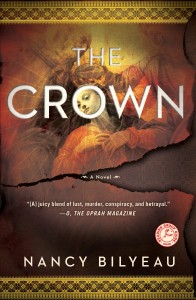
First a blurb to tantalize you: London, May 1537. When Joanna Stafford, a novice nun, learns her cousin is about to be burned at the stake for rebelling against Henry VIII, she makes a decision that will change not only her life but quite possibly, the fate of a nation. Joanna breaks the sacred rule of enclosure and runs away from Dartford Priory to bear witness to her cousin’s execution.
Arrested along with her father at the site of the burning and sent to the Tower of London, Joanna finds herself a pawn in a deadly power struggle. Those closest to the throne are locked in a fierce fight w those desperate to save England’s monasteries from destruction. Charged with a mission to find a hidden relic believed to possess a deadly mystical power, Joanna and a troubled young friar, Brother Edmund, seek answers and clues across England.
And now some questions to take you behind cover-copy (and it’s no exaggeration to say Nancy reveals some things here she has never told readers before):
1) What inspired you to choose a fictional Dominican nun as the heroine of The Crown?
I first chose to set a book in the 16th century—simply because it is my favorite century from history. I love mysteries and thrillers, and wanted to attempt to write one with a female protagonist. It took me a long time to figure out who would be the person. I didn’t want a royal or lady in waiting, yet someone living in a Tudor village, I feared it would be too hard to inject that woman into conflict that rises to the level of a thriller. A nun struggling for her future in the middle of the Dissolution of the Monasteries—when the Catholic Church was being violently dismantled—could be quite compelling. Finally, I picked a Dominican because there was only one such order in England, and that made it special.
2) I found it refreshing that Joanna stayed “in character”—true to the religious sentiments one would expect a 16th century nun to have. How difficult was it for you to achieve that? Do you think it was a risky choice given you are writing for a modern—and generally rather skeptical—audience?
One of my pet peeves is characters in historical novels who have modern sensibilities. It’s the easy way out. There is some strange part of my personality that compels me toward the most difficult choices. Sometimes I wish it were otherwise! But as soon as I decided on a nun, I was determined to make her authentic to the spiritual values of the period. I didn’t want to write a book with a reluctant nun who is forced into it by her father or retreats to a priory after rejection by a man. Again, that’s the easy way out. I did worry that readers would be turned off by a spiritual woman but I’ve not seen that reaction. Readers of historical fiction are eager for authentic behavior, I’m more convinced of that than ever. Commit anachronisms at your peril!
The way I tried to achieve it was reading what women in religious orders actually wrote: Catherine of Siena, Hildegarde of Bingen, Teresa of Avila. That helped get me in the proper mood. Also a writing teacher recommended I research the lives of the early female Catholic saints, the ones who were torn to pieces in the Roman Coliseum or who became martyrs in the Dark Ages and medieval period. The thinking of these women is about as far from a 21st century mindset as you can get. Just fascinating.
3) Your book doesn’t shy away from the unsavory sights or the more malodorous smells of life in Tudor England. In fact, in Joanna’s opening trip to Smithfield the revolting plays a large role. Of course accurate historical details help bring readers to a specific place and time, but I was struck by your very evident emphasis on the unsavory at the beginning of the book. Why specifically did you choose to highlight the grimy side of the 16th century?
I’ve written screenplays and that is a key part of what I like to do: Write visually. It’s not just dialogue and direct character action. I try to do all the research so I can put you on the street, inside the priory cloister, in a barge on the Thames. I wanted to time-travel the reader from the very beginning: You are on your way to Smithfield on execution day in May of 1537, you’re scared and you’re hungry and you’re exhausted—but still resolute. This is what it would feel like, smell like, sound like. Even taste like.
4) Besides Joanna, who is your favorite character in The Crown? Who is your least favorite? Why?
Brother Edmund is my second favorite—I like to think that he is a pretty original character and for some reason I have tremendous sympathy for him. He’s a mix of strengths and weaknesses. I tried my best to make all the characters nuanced. I don’t like two-dimensional people hurtling through thrillers. Or characters with worn-out identifying descriptions: a natural beauty, a strong-jawed man. Ugh.
My least favorite character? Hmmmm. That’s an interesting question. Did I create a character I personally would dislike? Apart from George Boleyn—and I can’t give away why I wouldn’t want to have encountered him at a tender age, or else that would be a spoiler—it would have to be the young prioress. She was inspired by a boss I once had—a very difficult one. In fact, I drew on my personal work history, my years in the magazine business, when depicting life in the priory. I thought about it a lot, and decided that though the stereotype of a nunnery was of graceful, serene ladies floating down the halls in harmony, I imagined that there would be the rivalries and tensions found in any group of people essentially working together, and in this case living together too. I was very happy to receive an email from a Dominican nun and two emails from friars that said I captured correctly the essential feeling of life in an enclosed religious community. 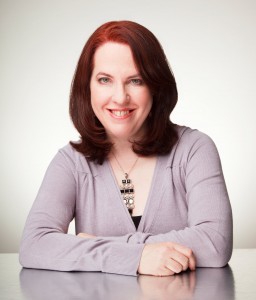
5) Where have you traveled for inspiration and research for The Crown?
I’ve traveled to most of the places that Sister Joanna Stafford travels to: Dartford, Smithfield, and the Tower of London. Even though the present Tower is closest to what it was in the 1530s, I felt most connected to Joanna in Dartford, in Kent. I walked along the remains of the stone wall that once surrounded the priory of sisters. That is all that remains.
But since I live in New York City, my research trips to England can’t happen as often as I’d like. For inspiration closer to home, I go to the Cloisters Gardens and Museum of the Metropolitan Museum of Art. For anyone who hasn’t had a chance to visit, go! The Cloisters was assembled in the 1930s from a series of medieval French abbeys that they brought over, brick by brick. The re-created rooms are filled with paintings, sculpture, and exquisite objects contemporary to that time. In fact, I got the idea for a murder weapon in The Crown while walking through the Cloisters! I’ve never told any other interviewer that.
6) Truth is often stranger than fiction. During your research for The Crown what was the most unusual or unexpected thing you discovered?
There were certain things I discovered about King Athelstan, the dark ages Saxon monarch, that really surprised me. As much as the Tudor monarchs are over-exposed in some people’s eyes, Athelstan is under-exposed. He arguably was the first king of Britain after he won a enormous battle against the Vikings and the Scots—and no one even knows where the battle was fought. There’s also the question of his sexuality. So interesting.
7) Authors of historical novels walk a line between known historical facts and fiction. Where do you draw the line on your personal map between accuracy and imagination?
My book is not the kind of historical fiction that tells the story, with imagination and new insights, of famous people who once lived. Some “real” people populate The Crown, but most of the characters are from my imagination. And my thriller plot is rather audacious—that’s what folks tell me. So I mixed the carefully researched truth with the fantastical on many pages.
8. Is there anything you’d like to tell us about the Tudor period which even avid readers of Tudor-era fiction might not know—perhaps a preconception you’d like to overturn?
I had no religious or political agenda whatsoever when I started researching this book. But the deeper I got into it, the more I became convinced that the stereotype of a decaying Catholic church that had lost its relevance was wrong. History certainly was written by the winners when it came to the English Reformation. Dartford Priory, where I set most of the book, was a vital center of intellectual achievement and pious observance. Also there was an infirmary in the town run by the priory as well as an almshouse for the poor, and local girls were taught to read there. All that was eliminated when the priory “surrendered” to the will of Henry VIII and the sisters were turned out.
9) Which is most likely to spark the idea for a Nancy Bilyeau novel—a time period, a specific event or a character?
Time period. I am drawn to the time and place, and after that the characters come. Hmmmm. Is that unusual?
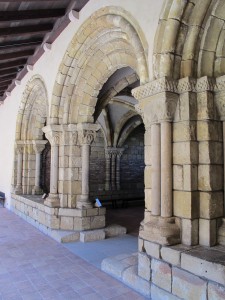
I’d give anything for a lair. I wrote The Crown at the New York Public Library, my kitchen table and various Starbucks. But when I had to write a key scene and needed to get into the mood, I would pack up the laptop and head for The Cloisters. The perfect environment. However, the battery on my laptop would run out in two hours and there are no plugs for writers. Still, I’d take it to the chapter house and sit on the stone “bench” and tap away furiously till the power drained – or the guards started coming after me.
11) If you could read any book again for the first time, what would it be and why?
Rebecca. I read it first when I was in high school and it made a deep and lasting impression on me. I’d like to feel the thrill of some of those revelations again. Since then I’ve re-read it at least six times and come away with a boundless respect for Daphne du Maurier’s craft and also I am so curious about some things in the book. For instance, when Max de Winter tells his second wife that on their honeymoon, Rebecca, laughing, her black hair blowing in the wind, told him things about herself “that I would never repeat to a living soul,” I would love to know—What are those things?
12) I know you are hard at work on the next book in this series, The Chalice, can you share a bit about the new book?
It’s my sequel to The Crown. It’s darker in some ways, with even higher stakes. More executions. And more romance too.
13) In The Crown a Joanna brushes elbows with a number of famous historical characters like Catherine Howard and Stephen Gardiner, Bishop of Winchester, can we expect more cameos from the rich and famous in your sequel? Who might we meet?
Oh I had such a fantastic time researching the “real” people of the time. Gardiner returns, of course; this time Joanna encounters not one but two women who marry Henry VIII. There are a number of aristocrats of the time who played very important parts in history but are not often written about—I put them to work in The Chalice. And finally, Joanna comes face to face with none other than Thomas Cromwell.
About Nancy: Nancy Bilyeau is a writer and magazine editor who has worked on the staffs of InStyle, Rolling Stone, and Ladies’ Home Journal. She is currently the executive editor of DuJour magazine. She was born in Chicago and grew up in Michigan, earning a bachelor’s degree from the University of Michigan. Now she lives in New York City with her husband and two children. The Crown was nominated for an Ellis Peters Historical Dagger Award 2012 by the Crime Writers’ Association, given to Best Historical Crime Novel. Nancy has finished writing a sequel to The Crown, which is called The Chalice.
I am a Guest at What Women Write (and I Choose to Write About Men—Go Figure)
Today I am lucky enough to be the guest blogger over at the terrific What Women Write. I am talking about the measure of a man—or at least “H”istory’s measure—and taking issue with the traditional definition of success. Stop by and read all about it.
Of if you are in the mood to find out what advice I would give my pre-book-launch self if I had a time machine, stop over at fellow historical author Erika Robuck’s blog. She’s doing a six month anniversary interview with me.
Watch This Space
No, seriously. Watch it.
This Friday I will inaugurate a series of interviews called “Get to Know the Writers I Know” with a guest appearance by Nancy Bilyeau, author of The Crown. Then ten days later I’ll be speaking (well, you know what I mean) with Erika Robuck, author of Hemmingway’s Girl. As you may suspect from what I’ve posted in this space (or as you know for certain if you’ve ever met me) I am not shy, so you can expect some probing questions and interesting answers.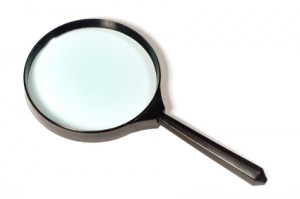
Celebrating 15 Weeks on Sale with Another Excellent Review
Can a book have a Quinceanera? The Sister Queens has now been on sale for 15-weeks. I almost forgot because I am hard at work on a new, 16th century, novel. Still a little celebrating is in order lest the toddler book get jealous of the new baby book. And just in time for the little anniversary party the novel received an excellent review from The Medieval Bookworm. Meghan kindly calls The Sister Queens:
an excellent work of historical fiction . . . . Certainly the best I’ve read this year set in the Middle Ages.”
and says:
It’s in part the relationships between the sisters, though, that makes this an excellent book. Yes, they have their children and their husbands, but they also always have one another, and it’s the sort of heartwarming female relationship that doesn’t always dominate mainstream fiction in quite the way it should.”
Sex and the Historical Novelist
Birds do it, bees do it, and our ancestors most definitely did it, but should sex be included in the pages of historical novels?  Today at Peeking Between the Pages I discuss the expansion of sexual content from historical romance into straight historical fiction and my views on this trend.
Today at Peeking Between the Pages I discuss the expansion of sexual content from historical romance into straight historical fiction and my views on this trend.
Meanwhile, the latest review of The Sister Queens is in! The Broke and the Bookish says:
an excellent slice of an extremely interesting period of time. We get the politics and social aspects of not one but two countries (always a bonus!) as well as in the latter part of the book, Louis’ crusade to theHoly Land. I felt very connected to them and their personalities were extremely opposite and varied. I enjoyed watching the sisters grow from young teenagers to mature mothers, queens, and friends. Recommended to all historical fiction lovers!
Confessions of a Closet “Description Minimalist
Today my blog travels take me to Just One More Paragraph where I confess (oh heresy) that too much description in a historical novel (even of very lovely gowns) causes my eyes to glaze over. How about you?
Come over, read my viewpoint on the effective uses of descriptive language in historical writing, and share yours. While you’re there enter to win a copy of The Sister Queens.
